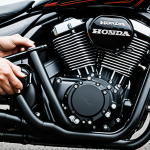Step-by-Step Wheel Bearing Maintenance for Commercial Trucks
Proper wheel bearing maintenance is crucial for commercial truck safety. Start by preparing your truck: ensure it’s securely parked on a flat surface, apply the parking brake, and use appropriate jacks and supports to safely lift the wheel. Always consult the manufacturer’s manual to confirm the correct procedures and specifications for your specific vehicle.
Begin the maintenance steps by removing the wheel and carefully dismantling the hub assembly to access the wheel bearings. Clean the bearings thoroughly with a degreaser to remove old grease and debris. This cleaning phase is essential to prevent contamination and premature bearing wear.
Additional reading : Essential Safety Tips for Elevating Your Driving Experience with a Digital Dashboard Upgrade
Next, inspect bearings for signs of wear or damage—look for pitting, corrosion, or scoring. Any faults should prompt replacement. Then, apply a high-quality, manufacturer-recommended grease liberally, ensuring even coverage to facilitate smooth rotation and heat dissipation.
Finally, reinstall the bearings and hub, paying close attention to torque settings as specified by the manufacturer. Recording all maintenance steps and findings in a log aids future inspections and supports compliance with safety regulations. Following these steps meticulously guarantees sustained performance and contributes significantly to commercial truck safety.
Also to see : Essential Safety Insights for Installing Aftermarket Suspension Kits: Avoid Common Pitfalls for a Smooth Ride
Step-by-Step Wheel Bearing Maintenance for Commercial Trucks
Proper wheel bearing maintenance is essential for commercial truck safety and vehicle longevity. Begin by thoroughly preparing your truck. Ensure the vehicle is securely jacked up on a flat surface, using quality supports to provide a stable and safe workspace. Wear appropriate safety gear such as gloves and eye protection throughout the process.
Next, remove the wheel and brake components carefully to access the bearing assembly. The core maintenance steps include cleaning, inspecting, greasing, and reinstalling the wheel bearings. Use a solvent to remove old grease and contaminants. Inspect the bearings for signs of wear like pitting, discoloration, or roughness. If damage is present, replacement is necessary.
Apply manufacturer-approved grease evenly inside the bearing and packing it well to ensure smooth rotation. Reassemble the components in the reverse order, paying close attention to torque specifications given by the manufacturer. Finally, check the bearing preload to avoid excessive tightness or looseness, which can cause premature wear or failure.
Record all maintenance details, including date, odometer readings, and any parts replaced. This documentation supports maintenance steps adherence and supports ongoing commercial truck safety initiatives. Keeping up with this procedure extends bearing life, improves performance, and helps prevent costly repairs and downtime.
Identifying Common Wheel Bearing Issues in Commercial Trucks
Understanding early signs to protect commercial truck safety
Recognising wheel bearing problems early is vital to preventing costly commercial truck repair and ensuring safety. Drivers and mechanics should be alert to common warning signs such as unusual noises—like grinding or humming—emanating from the wheels, vibrations through the steering wheel, or abnormal tyre wear patterns. These symptoms often indicate deteriorating bearings that require immediate attention.
A thorough visual and manual inspection helps confirm faults. Check for grease leakage, rust, or damage to the bearing seals. Manually wiggling the wheel can reveal excessive play, indicating bearing wear. Such signs suggest the bearings are compromised and may soon fail.
Neglecting these issues can lead to catastrophic bearing failure, risking wheel lockup or detachment while driving, which poses severe hazards and jeopardises commercial truck safety. Timely detection through symptom identification enables proactive repairs, avoiding breakdowns and accidents. Therefore, recognising early wheel bearing problems is a critical maintenance step that safeguards both the vehicle and its operator.
Step-by-Step Wheel Bearing Maintenance for Commercial Trucks
Carefully preparing your commercial truck is vital before starting wheel bearing maintenance. Begin by securely jacking the truck on a flat surface and using stable supports to ensure safety. Confirm that the truck cannot move by applying parking brakes or wheel chocks. Wearing gloves and eye protection enhances personal safety throughout the maintenance steps.
Once safety is ensured, remove the wheel and hub assembly to access the wheel bearings. Thoroughly clean the bearings with an appropriate solvent to eliminate old grease and debris, reducing the risk of contamination that could impair bearing function. After cleaning, inspect each bearing closely for signs of wear such as pitting or corrosion, which can lead to failure if ignored.
Greasing is crucial; use manufacturer-recommended grease and pack it evenly within the bearing to enhance lubrication and heat dissipation during operation. When reinstalling the bearings and hub, strictly follow manufacturer specifications for torque to avoid over-tightening or looseness that could jeopardize truck safety.
Document every maintenance step, including findings and applied specifications. This record supports reliable wheel bearing maintenance practices and strengthens compliance with commercial truck safety standards.
Step-by-Step Wheel Bearing Maintenance for Commercial Trucks
A clear path to reliable commercial truck safety
Preparing your commercial truck properly is the foundation of effective wheel bearing maintenance. Begin by parking the truck on a level surface, securely applying the parking brake, and lifting the vehicle using manufacturer-approved jacks and supports. This ensures a stable workspace, vital for safe and precise maintenance steps.
Once the wheel is removed, access the wheel bearings by dismantling the hub assembly cautiously. Clean the bearings using a suitable degreaser to eliminate old grease and contaminants completely. This cleaning prevents dirt-related damage and extends bearing life.
Next, inspect the bearings carefully for wear signs such as pitting, corrosion, or scoring. Identifying faults early allows timely replacement, safeguarding commercial truck safety. Applying high-quality, manufacturer-recommended grease evenly across the bearing is critical. Proper greasing facilitates smooth rotation and dissipates heat, enhancing durability.
During reinstallation, adhere strictly to the torque specifications outlined by the manufacturer. Incorrect torque can compromise bearing performance. Finally, document every maintenance step in a log—including parts replacement and inspection results—which supports maintenance schedules and regulatory compliance. These methodical steps uphold safety standards and optimise truck operation.
Step-by-Step Wheel Bearing Maintenance for Commercial Trucks
Proper wheel bearing maintenance starts with meticulously preparing your commercial truck. Securely jack the truck on a flat surface, using reliable supports, and ensure the vehicle cannot move by applying parking brakes and wheel chocks. Wear safety gear such as gloves and eye protection to safeguard during the task.
The core maintenance steps begin with removing the wheel and hub assembly to access the bearings. Clean the bearings thoroughly with a solvent to remove old grease and contaminants—this step is vital to prevent premature wear. Next, inspect each bearing carefully for signs of damage like pitting, corrosion, or scoring; any defects require replacement to maintain commercial truck safety.
Grease the bearings liberally with manufacturer-approved grease, packing it evenly to facilitate proper lubrication and heat dispersion. When reinstalling the hub and bearings, strictly adhere to manufacturer torque specifications to avoid issues that compromise safety. Finally, record every maintenance detail—date, odometer reading, grease type, replaced parts—as accurate documentation supports consistent upkeep and regulatory compliance, reinforcing overall commercial truck safety.
Step-by-Step Wheel Bearing Maintenance for Commercial Trucks
Thorough wheel bearing maintenance begins with correctly preparing your commercial truck for service. Ensure the truck is securely jacked on a level surface, equipped with stable supports, and immobilised using parking brakes and wheel chocks. This safety setup is fundamental to safeguard both the technician and the vehicle.
Start by removing the wheel and carefully dismantling the hub assembly to expose the bearings. Clean the bearings using a manufacturer-approved solvent to remove old grease, dirt, and contaminants thoroughly. This cleaning step is critical for preventing premature wear and maintaining commercial truck safety.
Once clean, inspect every bearing closely for wear indicators such as pitting, corrosion, or scoring. Identifying these faults early allows for timely replacement, a key maintenance step to avoid unexpected failure.
Apply the recommended grease liberally, packing it evenly within the bearing to ensure smooth operation and heat dissipation. When reinstalling, strictly follow manufacturer specifications for torque settings; improper torque can lead to excessive bearing play or premature failure.
Finally, document all maintenance steps, including findings, grease type, and torque values. Accurate records support consistent upkeep and compliance with safety standards, reinforcing reliable wheel bearing maintenance and overall commercial truck safety.





